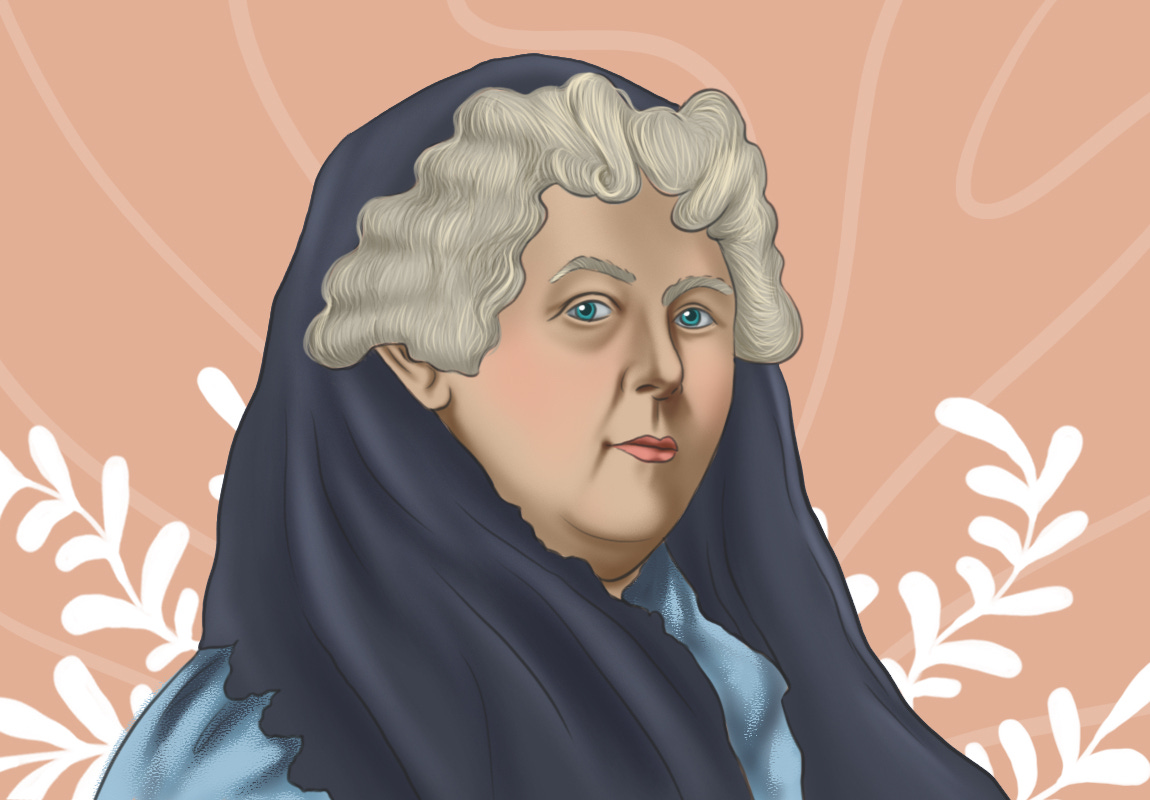Elizabeth Cady Stanton, a prominent women’s rights activist during the 19th century, is well known for formulating the first concerted demand for women’s suffrage in the United States in 1848.
Elizabeth Stanton was born on November 12, 1815, in Johnstown, New York, as the daughter of Margaret Livingston and Daniel Cady, who were Johnstown’s most prominent citizens. After receiving a premier education at home, Elizabeth had her formal education at the Johnstown Academy and Emma Willard’s Troy Female Seminary in New York.
Her father, Daniel Cady, was a noted lawyer and a member of the US House of Representatives. According to Women’s History, young Elizabeth gained informal legal education by talking to her father and listening to his conversations with colleagues. During this time, she learned of the discriminatory laws under which women lived and was determined to win equal rights for her sex.
In 1840, Elizabeth married abolitionist lecturer Henry Stanton. According to Britannica, during her wedding, she insisted that the word ‘obey’ should be dropped from the wedding ceremony. By that time, she also became active in the anti-slavery movement and worked alongside leading abolitionists of the day, including Sarah and Angelina Grimke and William Lloyd Garrison. Later that year, she attended the World Anti-Slavery Convention in London where she met abolitionist Lucretia Mott. Like Elizabeth, Lucretia was outraged at the denial of official recognition to several female delegates. Lucretia and Elizabeth decided to call a women’s rights convention when they returned home.
In 1854, Elizabeth received an invitation to address the New York Legislature.
In 1848, Elizabeth and Lucretia held the first women’s rights convention at Seneca Falls, New York. According to Women’s History, Elizabeth also authored The Declaration of Sentiments, which expanded on the Declaration of Independence by adding the word ‘woman’ or ‘women’ throughout. This pivotal document called for social and legal changes to elevate women’s place in society. It listed 18 grievances from the inability to control their wages and property, to the difficulty in gaining custody in divorce, to the lack of the right to vote. In this work, Elizabeth detailed the inferior status of women, called for extensive reforms, and effectively launched the American women’s rights movement. The same year, she circulated petitions throughout New York to urge New York Congress to pass the New York Women’s Property Act.
Even though Elizabeth remained committed to efforts at gaining property rights for married women and ending slavery, the women’s suffrage movement became her top priority. In 1851, she met Susan B. Anthony, a social reformer, and a women's rights activist. They quickly began collaborating on speeches, articles, and books. This partnership dominated the women’s movement for over half a century. They planned campaigns, spoke before legislative bodies, and addressed gatherings at conventions. According to Britannica, Elizabeth, who was a better orator and writer, was perfectly complemented by Susan, the organiser and tactician. When Elizabeth was unable to travel owing to the demands of raising her children, she authored speeches for Susan.
In 1854, Elizabeth received an invitation to address the New York Legislature. Her speech resulted in new legislation being constituted in 1860, granting married women the rights to their wages and to equal guardianship of their children.
In 1862, the Stantons moved to Brooklyn and later to New York City, where Elizabeth became involved in Civil War efforts and joined Susan B. Anthony in her advocacy for the 13th Amendment which ended slavery.
Elizabeth was able to travel more after the civil wars. She delivered speeches all over the country and she became one of the best-known women’s rights activists in the 19th century. Her speeches addressed topics such as maternity, child-rearing, divorce law, married women’s property rights, temperance, abolition, and presidential campaigns.
Elizabeth and Susan opposed the 14th and 15th Amendments to the US Constitution, which gave voting rights to black men but not to women. Their stance on this matter led to a rift between other women suffragists. This prompted Elizabeth and Susan to found the National Women Suffrage Association (NWSA) in 1869. Elizabeth also edited and wrote for the NWSA’s journal The Revolution. As NWSA president, Elizabeth debated the major political and legal questions of that time.
In 1895 and 1898, Elizabeth published two volumes of the Woman’s Bible.
The two major women’s suffrage groups united in 1890 as the National American Woman’s Suffrage Association. Elizabeth was elected president of the new association and she held that position until 1892.
By the 1880s, Elizabeth had focussed more on writing than travelling and lecturing. She wrote three volumes of the History of Woman Suffrage (1881-85) with Susan B. Anthony and Matilda Joslyn Gage. In this work, which was published several decades before women won the right to vote, the authors documented the individual and local activism that built and sustained the movement for women’s suffrage.
In 1895 and 1898, Elizabeth published two volumes of the Woman’s Bible. In this work, she voiced her belief in a secular state and urged women to recognise how religious orthodoxy and masculine theology obstructed their chances of achieving self-sovereignty. She wrote an autobiography, Eighty Years and More, about the great events and work of her life.
Elizabeth Cady Stanton died on October 26, 1902, in New York City, 18 years before women gained the right to vote.
Now put on your thinking hats and think about the following questions for a couple of minutes.
Can you think of how The Declaration of Sentiments by Elizabeth Stanton influenced the women’s rights movement of that time?
How would you describe the contributions of Elizabeth Stanton in the suffrage movement?
Write down your thoughts and discuss them with your students, children, and your colleagues. Listen to their views and compare them with your own. As you listen to others, note how similar or different your views are to others’.
Thank you for listening. Subscribe to The Scando Review on thescandoreview.com.
Happy Teaching!














Elizabeth Cady Stanton: A life dedicated to gender and social justice